Portraits of Rural China
![]()
I have a weakness for photography travel. My trips often start with a simple phone call or email from a friend checking to see if I might be interested in photographing somewhere. In the case of my recent visit to China, however, there was no message from a friend… just a single image from a place called “XiaPu” that I ran across and that really inspired me to travel there.
While there, I photographed three types of subjects: “landscapes” (both with and without people in the scene); painterly outdoor scenes from XiaPu; and, environmental portraits from villages. This article will focus on the last of these types of subjects… the portraits… but starting with the actual planning and logistics of the trip.
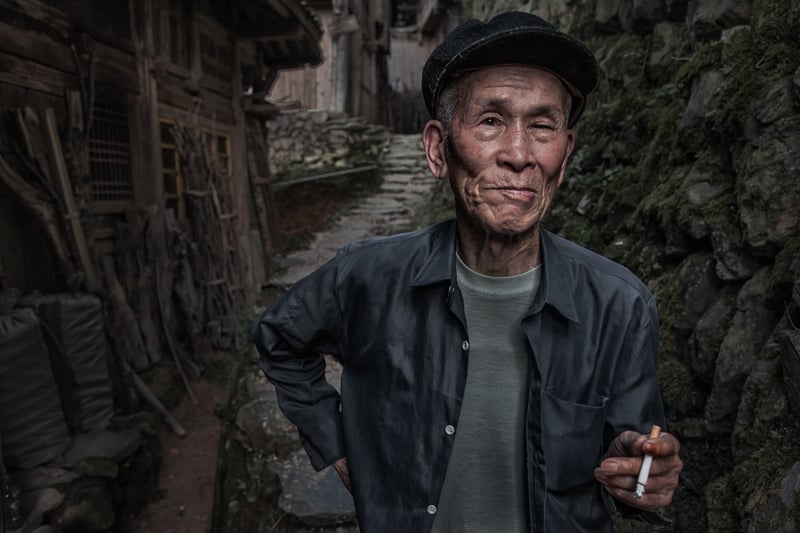
Trip Planning
I don’t speak a word of Chinese. So, the most critical step in planning the trip was to choose a local guide in Guilin. I was on a budget and found a number of people advertising themselves as photography tour guides. However, I really needed someone that knew photography well, including what spots were good for sunrise and sunset. I needed someone that was used to working long hours, including getting up very early. Also, I wanted someone that knew the local villages and could help arrange portrait shoots. Although there were one or two foreign guides available, I went with a well-connected, experienced local guide. This really paid off when it came to arranging portrait sessions.
The basic itinerary was to start in Guilin and spend 9 days there “on my own” with the local guide, along with a driver. The Guilin area is known for the beautiful karst mountains and Li River, as well as cormorant fisherman. Just a short drive away are the Longji rice terraces, which were built over a 700 year period and are simply amazing. There are also many villages along the way to find portrait subjects. After my time in Guilin, I would then travel to XiaPu with a group of other photographers from Asia, led by Steve Chong, a Malaysian photographer and good friend.
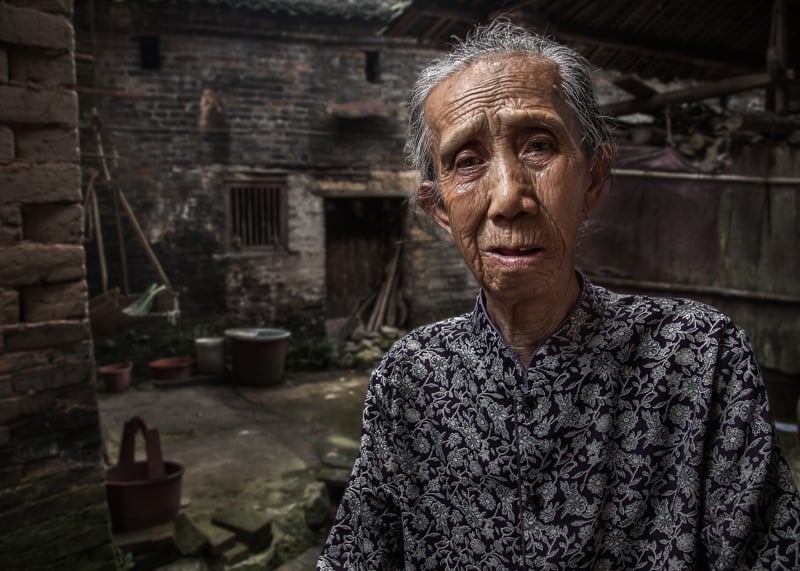
The Routine
While photographing around Guilin, I had a routine that I followed every single day for all 9 days, without exception. Every morning, I woke up around 4:00 and got to a great landscape location for sunrise. This usually meant climbing a hill or taking a boat in the dark to the location, then spending perhaps 3 hours there. After coming back and having breakfast, I took a short break and then headed out to a few local villages where my guide and I would walk around in search of interesting looking people for portraits.
After shooting portraits, we would head to a sunset location, where we would stay until either the light faded or getting good light had become hopeless. Then, the day ended with traveling back to the hotel, followed by dinner, backing up my photos and generally getting to bed around 11:30 or 12:00. So, the basic routine was sunrise-portraits-sunset with a few meals in between… and about 4 hours of sleep a night.
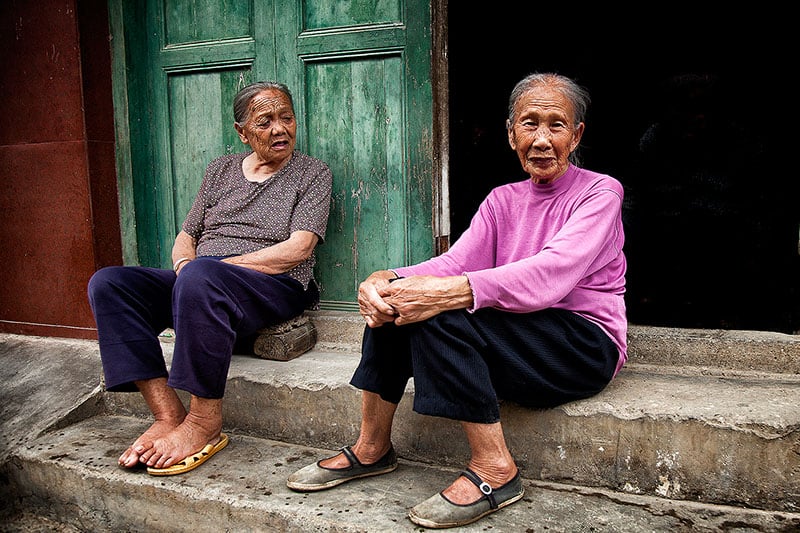
Logistical Challenges From the Start
Although I had planned well, there were logistical challenges beyond my control right from the start. In fact, everything went as planned until about 8 hours after leaving home. Our flight into Hong Kong was diverted to Taiwan where we spent a night. This meant rebooking my connecting flights and hotel as well as modifying arrangements with my guide.
I had specifically instructed my guide that keeping costs low and being close to photographic locations took priority over staying in nice hotels. Let’s just say that he took this very seriously and that I stayed in some pretty “interesting” hotels. In one case, there was a dead bug on the floor the size of a small bird (4-inch wing span) that was covered with dust. The sink had a rusted drainpipe so that all of the water and whatever else going down the drain ran out all over the floor onto my shoes.
One of the most important planning steps was to discuss the idea of flexibility with the guide ahead of time. On the 2nd day of shooting, we learned that the Li River was still flooded from torrential rains the previous week. The Li River was so high that the cormorant fisherman could not be on the river. My guide suggested we wait it out a day and hope for the best the following day. Instead, I flipped the itinerary on the spot and we went to the rice terraces first, re-booking all the hotels and driving in the opposite direction. This turned out to be the right decision.
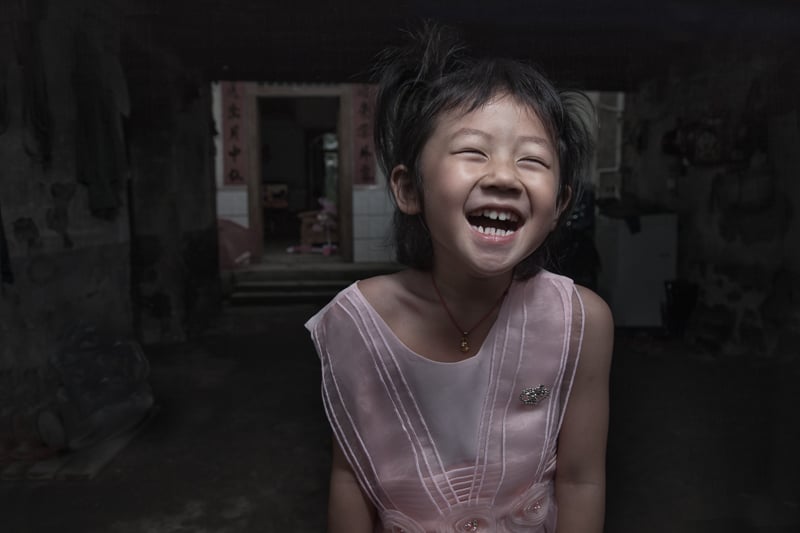
Finding My Portrait Subjects
Many of my favorite images from the trip were portraits, which is the focus of this article. I create stylized, surreal portraits of everyday people. I say “everyday people,” but the truth is that I seek out intriguing looking people that have something special or unique about them. Then, I try to capture their emotions through a photograph. I look for people that have “experienced life” and often focus on older people as my subjects. I usually find them off the beaten path because the subject and background are more likely to work well together.
My local guide and driver got me to the villages and helped arrange photo sessions with the villagers. The strategy was to simply walk around and ask where the older people in the village lived and even knock on some doors. In some cases, my guide would knock and walk us both right into the house before hearing a response. This would have landed us in jail in the U.S., but worked well in these villages.
I avoided photographing people wearing clothes that had writing or familiar slogans. There is something about a Nike shirt that ruins a portrait of a rural villager. I also generally avoided taking pictures of people wearing colorful traditional costumes, as they come off as touristy to me.
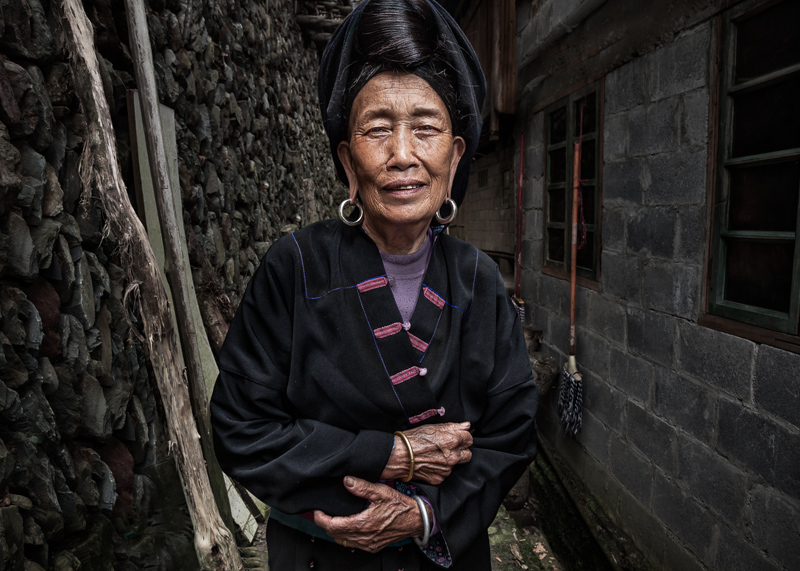
Shooting Technique
My basic formula for capturing portraits is to shoot relatively wide-angle, get close to the subject, get the hands in the picture and use a mix of natural light with some minimal diffused flash lighting.
1. Shoot wide, get close – I should say shoot “somewhat” wide-angle because I generally shoot at around 24 mm and usually no wider. I find that range is a good balance of the reality you get at 50mm and the distortion you get with an ultra wide-angle lens. Because I am shooting wide, I get quite close to my subjects and warn them ahead of time about this. For me, the eyes are a critically important part of the picture and must be sharp. I focus on the closest eye and re-focus frequently as I move around the subject.
2. Posing and positioning – I often started sessions by showing pictures I had taken of other people. I asked my local guide to continue to chat with the subjects during the session. These two things helped put him or her at ease during the shoot and resulted in a more natural expression.
I usually had the subject look directly at the camera and asked them not to smile. I then start moving slightly left or right, asking them to keep their head still and just follow the camera with their eyes. I find that this often results in a more interesting look. I usually shoot from slightly below eye level. If the subject is standing at an angle (usually the case), I have them put their weight on the back foot.
I like to include the subject’s hands in the composition. With a wide-angle lens, their hands in the foreground will look large, so I try to strike a balance with the hands being prominent but not too large. Or, the arms can be folded (with one or both hands visible) and the arms used to form a frame around the bottom of the subject.
3. Complementary Backgrounds – Part of capturing emotion in my subjects is avoiding having elements that distract from them. When shooting wide-angle, you need to pay extra attention to this. When I am looking through the camera at the beginning of the session, it is typically with the background in mind. The usual suspects for distracting elements include trees behind the head, straight lines or shapes that capture attention, bright lights, colorful objects and garbage on the ground that distracts. If the sky is bright and cloudless, then I try to keep the sky out of the image.
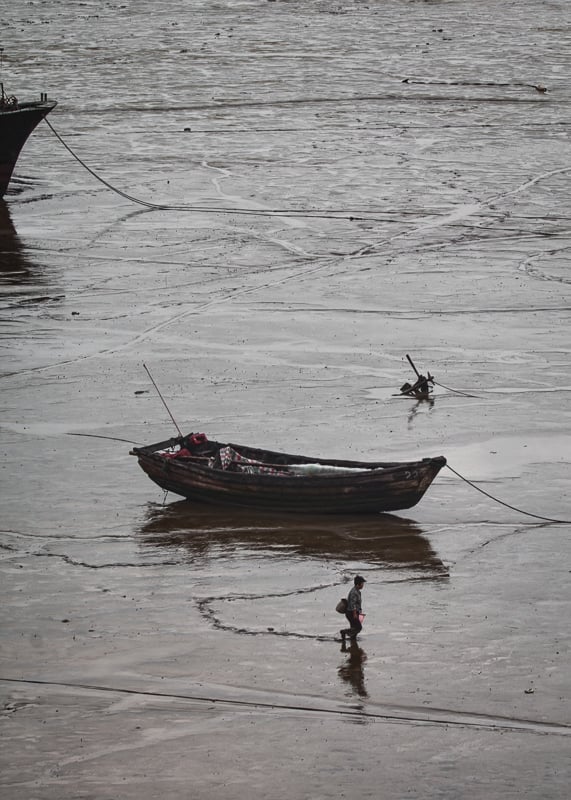
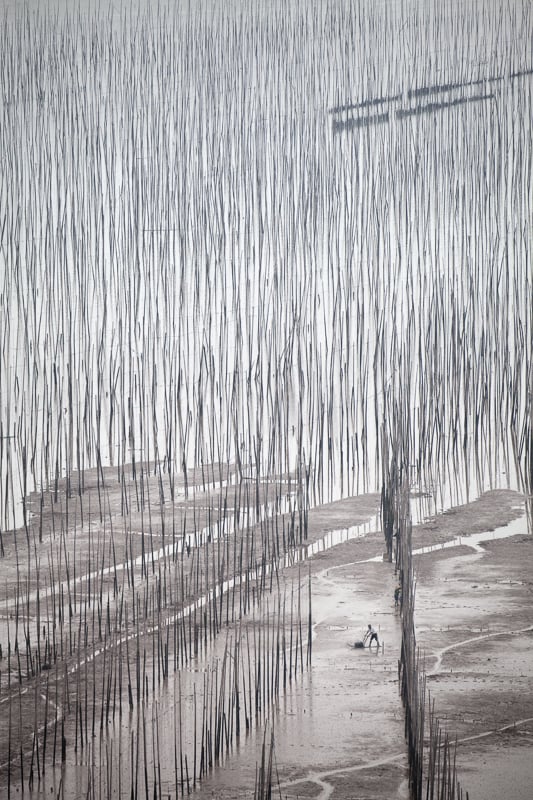
Lighting and Settings
For portraits, the main goal of lighting is to direct my viewer to my subject, especially his or her face, and also provide a sharp image with good contrast. Ninety percent of my portraits are shot using off-camera flash. Because I carry everything with me, I go pretty basic on lighting… just a single flash with an umbrella or softbox in most cases. I try to get a decent balance of natural and artificial light and avoid putting too much flash on the subject.
I always shoot portrait sessions in manual mode. I first get my exposure correct for the background, without adding flash. If the session is outdoors, I usually start with my camera set to ISO 100, f /5.6 or 7.1 and a shutter speed of around 1/160. I then make the necessary adjustments to get a slightly underexposed background, generally around 0.5 – 1 stop. For indoors, I start with a higher ISO and adjust flash power accordingly.
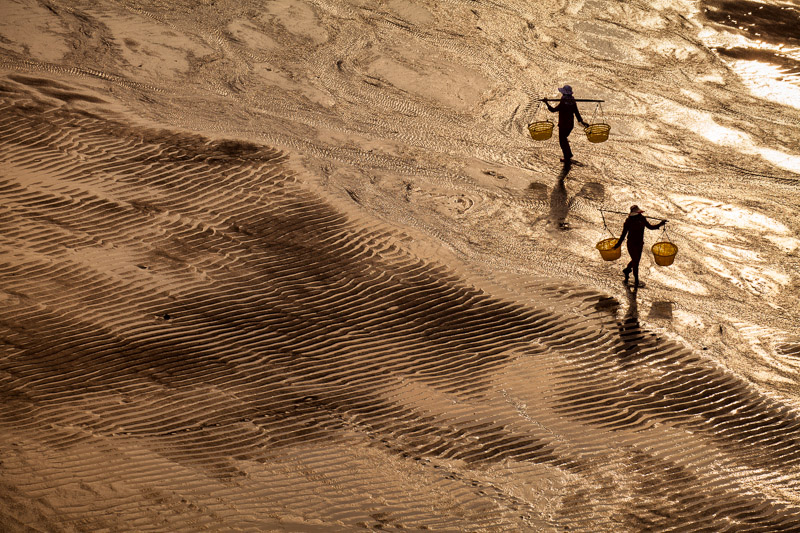
Processing
I shoot in RAW format, which gives me much more control over my processing. I start with a single RAW file and make all the adjustments to both the subject and background. However, this first processing is with the subject in mind. I start with global adjustments and generally decrease lights, bring up shadows, increase clarity (quite a bit, depending on subject), decrease saturation slightly and increase sharpness. Using adjustment brushes and gradients, I then make a number of local adjustments, primarily to smooth out bright spots, sharpen key features of the face and draw attention to the subject.
Next, I create a virtual copy of that file and reduce clarity and sharpness and may also slightly decrease saturation or exposure. This becomes the RAW version I use for the background. I then bring both into Photoshop as layers and create a mask to separate the subject from the background. This dual processing and masking allows me to draw more attention to the subject by using the sharper layer for him or her.
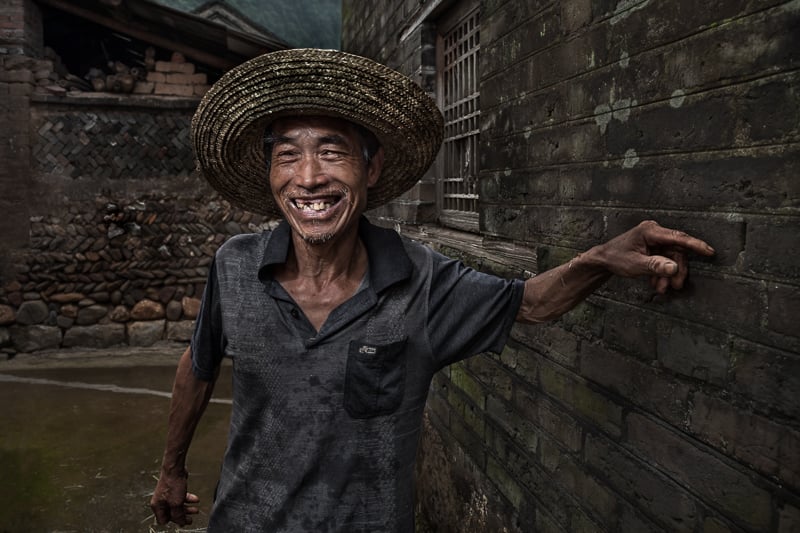
Much of what I then do is adjusting lighting and saturation to draw attention to the subject, especially his or her face and eyes. I use a combination of masking, brushes, gradients and luminosity masking techniques. I basically look for things that pull the viewer’s attention away from the subject and darken and/or de-saturate them.
I often add a color fill layer at low opacity and then experiment with a few Nik Filters that I like, almost always at very low opacity (10%, for example). When I’m satisfied with the results, it is back to Lightroom for a possible slight crop and a subtle vignette. I’ll step away from the image for a short while and give it one more look before calling it final.
About the author: Ken Koskela is a renowned Chicago-based travel photographer who captures subjects in excellent light, whether a dead tree forest in Namibia or an elderly villager in rural China. Ken combines his love of photography with over 20 years of travel experience to more than 75 countries in Africa, Asia, Europe and South America. His images appear in books, magazines, travel guides and calendars from around the world. You can find more of his work and connect with him on his website, blog, Facebook, and 500px.